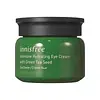What's inside
What's inside
 Key Ingredients
Key Ingredients

 Benefits
Benefits

 Concerns
Concerns

 Ingredients Side-by-side
Ingredients Side-by-side

Propylene Glycol
HumectantDimethicone
EmollientGlycerin
HumectantAscorbic Acid
AntioxidantDimethicone Crosspolymer
Emulsion StabilisingCetyl PEG/PPG-10/1 Dimethicone
EmulsifyingCyclohexasiloxane
EmollientWater
Skin ConditioningHydroxyethylpiperazine Ethane Sulfonic Acid
BufferingLauroyl Lysine
Skin ConditioningAluminum Starch Octenylsuccinate
AbsorbentPolysilicone-11
CI 77891
Cosmetic ColorantAdenosine
Skin ConditioningHydrolyzed Hyaluronic Acid
HumectantSteareth-20
CleansingChlorhexidine Digluconate
AntimicrobialN-Hydroxysuccinimide
Skin ConditioningSodium Citrate
BufferingPotassium Sorbate
PreservativePalmitoyl Tripeptide-1
Skin ConditioningChrysin
Skin ConditioningPentaerythrityl Tetra-Di-T-Butyl Hydroxyhydrocinnamate
AntioxidantPalmitoyl Tetrapeptide-7
Skin ConditioningCitric Acid
BufferingBiotin
AntiseborrhoeicPropylene Glycol, Dimethicone, Glycerin, Ascorbic Acid, Dimethicone Crosspolymer, Cetyl PEG/PPG-10/1 Dimethicone, Cyclohexasiloxane, Water, Hydroxyethylpiperazine Ethane Sulfonic Acid, Lauroyl Lysine, Aluminum Starch Octenylsuccinate, Polysilicone-11, CI 77891, Adenosine, Hydrolyzed Hyaluronic Acid, Steareth-20, Chlorhexidine Digluconate, N-Hydroxysuccinimide, Sodium Citrate, Potassium Sorbate, Palmitoyl Tripeptide-1, Chrysin, Pentaerythrityl Tetra-Di-T-Butyl Hydroxyhydrocinnamate, Palmitoyl Tetrapeptide-7, Citric Acid, Biotin
Water
Skin ConditioningPropanediol
SolventCaprylic/Capric Triglyceride
MaskingHydrogenated Poly(C6-14 Olefin)
EmollientButylene Glycol
HumectantCamellia Sinensis Seed Oil
HumectantGlycerin
HumectantCetyl Ethylhexanoate
EmollientMethyl Trimethicone
Skin ConditioningPhytosteryl/Behenyl/Octyldodecyl Lauroyl Glutamate
Skin ConditioningC14-22 Alcohols
Emulsion StabilisingGlyceryl Stearate
EmollientArachidyl Alcohol
EmollientStearic Acid
CleansingButyrospermum Parkii Butter
Skin ConditioningPalmitic Acid
Emollient1,2-Hexanediol
Skin ConditioningBehenyl Alcohol
EmollientAmmonium Acryloyldimethyltaurate/Vp Copolymer
Silica
AbrasiveHydroxypropyl Starch Phosphate
C12-20 Alkyl Glucoside
EmulsifyingCetearyl Alcohol
EmollientArachidyl Glucoside
EmulsifyingParfum
MaskingPanthenol
Skin ConditioningGlyceryl Caprylate
EmollientDisodium EDTA
Ethylhexylglycerin
Skin ConditioningMyristic Acid
CleansingCamellia Sinensis Leaf Extract
AntimicrobialLauric Acid
CleansingDextrin
AbsorbentTheobroma Cacao Extract
Skin ConditioningTocopherol
AntioxidantWater, Propanediol, Caprylic/Capric Triglyceride, Hydrogenated Poly(C6-14 Olefin), Butylene Glycol, Camellia Sinensis Seed Oil, Glycerin, Cetyl Ethylhexanoate, Methyl Trimethicone, Phytosteryl/Behenyl/Octyldodecyl Lauroyl Glutamate, C14-22 Alcohols, Glyceryl Stearate, Arachidyl Alcohol, Stearic Acid, Butyrospermum Parkii Butter, Palmitic Acid, 1,2-Hexanediol, Behenyl Alcohol, Ammonium Acryloyldimethyltaurate/Vp Copolymer, Silica, Hydroxypropyl Starch Phosphate, C12-20 Alkyl Glucoside, Cetearyl Alcohol, Arachidyl Glucoside, Parfum, Panthenol, Glyceryl Caprylate, Disodium EDTA, Ethylhexylglycerin, Myristic Acid, Camellia Sinensis Leaf Extract, Lauric Acid, Dextrin, Theobroma Cacao Extract, Tocopherol
 Reviews
Reviews

Ingredients Explained
These ingredients are found in both products.
Ingredients higher up in an ingredient list are typically present in a larger amount.
Glycerin is already naturally found in your skin. It helps moisturize and protect your skin.
A study from 2016 found glycerin to be more effective as a humectant than AHAs and hyaluronic acid.
As a humectant, it helps the skin stay hydrated by pulling moisture to your skin. The low molecular weight of glycerin allows it to pull moisture into the deeper layers of your skin.
Hydrated skin improves your skin barrier; Your skin barrier helps protect against irritants and bacteria.
Glycerin has also been found to have antimicrobial and antiviral properties. Due to these properties, glycerin is often used in wound and burn treatments.
In cosmetics, glycerin is usually derived from plants such as soybean or palm. However, it can also be sourced from animals, such as tallow or animal fat.
This ingredient is organic, colorless, odorless, and non-toxic.
Glycerin is the name for this ingredient in American English. British English uses Glycerol/Glycerine.
Learn more about GlycerinWater. It's the most common cosmetic ingredient of all. You'll usually see it at the top of ingredient lists, meaning that it makes up the largest part of the product.
So why is it so popular? Water most often acts as a solvent - this means that it helps dissolve other ingredients into the formulation.
You'll also recognize water as that liquid we all need to stay alive. If you see this, drink a glass of water. Stay hydrated!
Learn more about Water